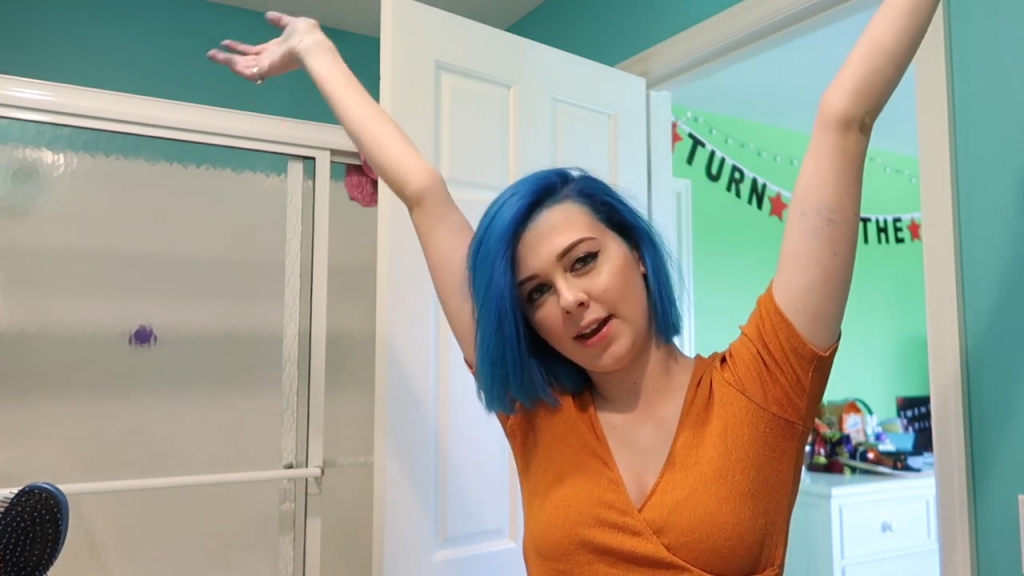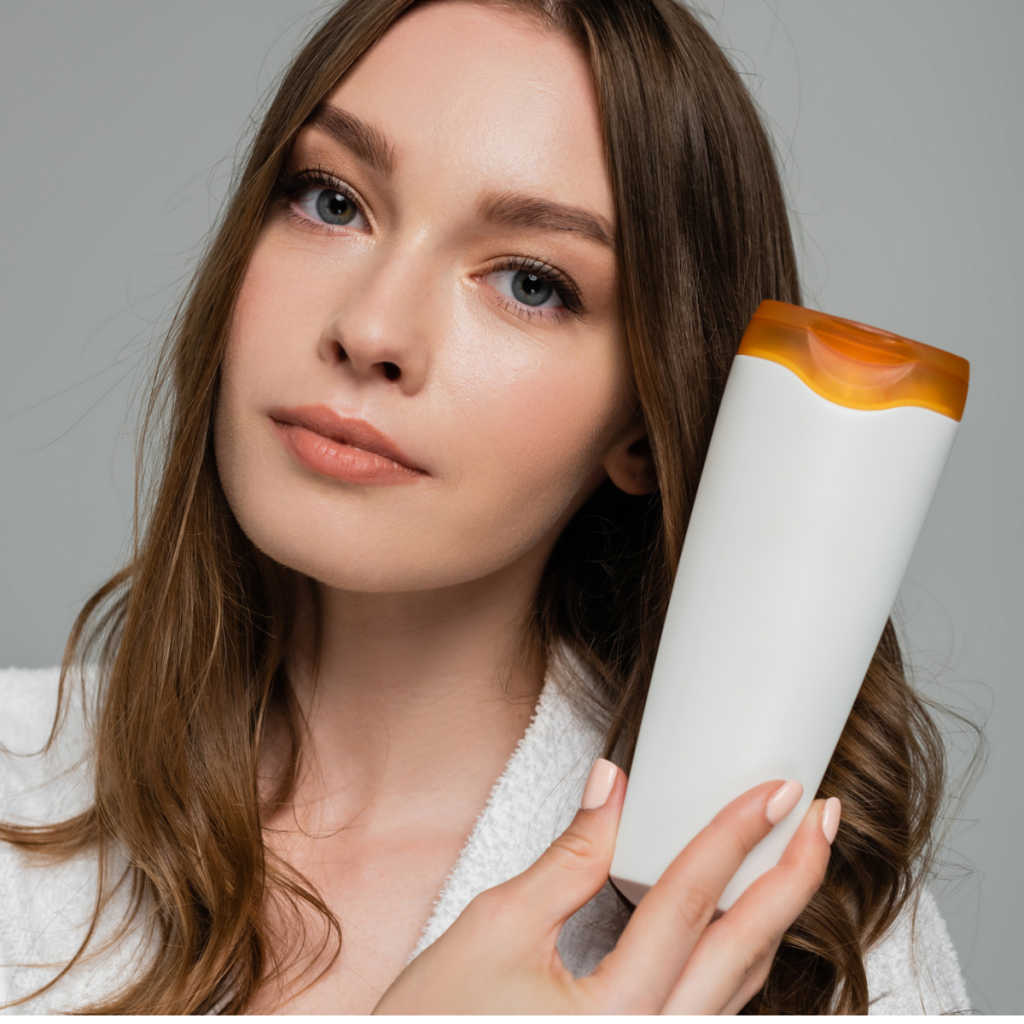Discover whether dandruff shampoo is safe to use on dyed sky blue hair. Learn how to maintain vibrant color while effectively treating dandruff.
Can Dandruff Shampoo Be Used on Dyed Sky Blue Hair?
If you’ve recently dyed your hair a fabulous sky blue color and find yourself dealing with pesky dandruff, you may be wondering if you can use dandruff shampoo without ruining your vibrant new hue. Well, fear not, because we’re here to dive into the world of dandruff and colored locks to help you understand the impact of dandruff shampoo on your sky blue strands.

Understanding Dandruff and Its Causes
Before we delve into the magical world of dandruff shampoo and dyed hair, let’s first understand what dandruff actually is and what causes it. Dandruff is the result of excessive skin cell turnover on your scalp, leading to flaky, itchy, and sometimes embarrassing white flakes. It can be triggered by a variety of factors, including dry scalp, hormonal changes, stress, and even certain medical conditions.
What is Dandruff?
Dandruff, my friend, is not just a mundane annoyance. It’s your scalp’s way of expressing its inner Picasso. Those tiny snowflakes are the scalp’s self-portrait, revealing its artistic endeavors in the form of dead skin cell shedding. So, in a way, dandruff can be seen as your scalp’s whispered reminder that it too craves attention and love.
Imagine your scalp as a bustling city, with its own ecosystem of skin cells constantly renewing and evolving. Sometimes, this process goes into overdrive, resulting in an excessive shedding of skin cells. These cells clump together with sebum, the natural oil produced by your scalp, forming those pesky flakes we know as dandruff. It’s like a snowy winter wonderland on your head, but without the joy of building snowmen.
But why does this artistic display of shedding occur? Well, there are several factors at play. Dry scalp, for instance, can cause the skin to become flaky and irritated, leading to dandruff. Your scalp might also be sensitive to certain hair products, which can trigger an inflammatory response, resulting in dandruff. In some cases, a condition called seborrheic dermatitis, characterized by red, itchy, and oily skin, can contribute to the development of dandruff.
Common Causes of Dandruff
Just like each artist has their muse, dandruff also has its reasons for appearing unannounced. Some common culprits for causing dandruff include dry skin, sensitivity to hair products, dermatitis, an overgrowth of yeast on the scalp, and even excessive oil production. So, remember to send a thank-you note to these factors for their contribution to the magical phenomenon we call dandruff.
One of the main causes of dandruff is dry skin. When your scalp lacks moisture, it can become dry and flaky, leading to the formation of dandruff. This can happen due to environmental factors, such as cold weather or low humidity, as well as excessive washing or using harsh hair products that strip away natural oils.
Sensitivity to hair products can also be a culprit behind dandruff. Certain ingredients in shampoos, conditioners, and styling products can irritate your scalp, causing inflammation and flaking. It’s important to pay attention to the ingredients list and choose products that are gentle and suitable for your scalp type.
Another common cause of dandruff is seborrheic dermatitis. This condition is characterized by red, greasy, and itchy skin, often affecting areas with a high concentration of oil glands, such as the scalp, face, and chest. The exact cause of seborrheic dermatitis is unknown, but it’s believed to involve a combination of genetic and environmental factors.
In some cases, dandruff can be triggered by an overgrowth of yeast on the scalp. Everyone has yeast on their skin, but certain factors, such as a weakened immune system or hormonal changes, can disrupt the balance and lead to an overgrowth. This overgrowth can cause inflammation and increased skin cell turnover, resulting in dandruff.
Excessive oil production, also known as seborrhea, can contribute to the development of dandruff as well. When your scalp produces too much oil, it can create an environment that is favorable for the growth of yeast and the shedding of skin cells. This can lead to dandruff and an oily scalp, creating a challenging combination to manage.
So, the next time you find yourself battling those pesky white flakes, remember that dandruff is not just a simple cosmetic concern. It’s a complex interplay of skin cell turnover, oil production, and various external and internal factors. Embrace the uniqueness of your scalp’s artistic expression and explore the world of dandruff solutions to find the perfect remedy for your scalp’s creative endeavors.
The Impact of Dandruff Shampoo on Hair
Now that we understand dandruff, let’s talk about its nemesis – dandruff shampoo. This magical elixir promises relief from the snowy flurries and brings your scalp back to harmony. But what exactly is in dandruff shampoo, and how does it work its wonders on your strands?
Ingredients in Dandruff Shampoo
The key to dandruff shampoo’s prowess lies in its ingredients. Most dandruff shampoos contain active ingredients like zinc pyrithione, ketoconazole, selenium sulfide, or coal tar. These wonderful compounds work their magic by targeting the yeast, fungus, and inflammation responsible for dandruff. Think of them as the superheroes swooping in to save the day, or in this case, your scalp.
Zinc pyrithione, for example, is a powerful antifungal agent that helps combat the Malassezia fungus, which is often the main culprit behind dandruff. It not only reduces the overgrowth of this fungus but also helps soothe the scalp and alleviate itching.
Ketoconazole, another common ingredient in dandruff shampoos, is a broad-spectrum antifungal that effectively fights various types of fungi. It disrupts the cell membranes of these fungi, preventing their growth and ultimately reducing dandruff flakes.
Selenium sulfide, on the other hand, works by slowing down the turnover of skin cells on the scalp. By regulating this process, it helps prevent the excessive shedding of dead skin cells that leads to dandruff. Additionally, selenium sulfide has antifungal properties that further contribute to its effectiveness against dandruff.
Lastly, coal tar, a byproduct of coal processing, has long been used as an effective treatment for dandruff. It helps slow down the growth of skin cells on the scalp, reducing their flakiness. Coal tar also has anti-inflammatory properties, which help alleviate the redness and itching associated with dandruff.
How Dandruff Shampoo Works
Picture this: Your scalp is like a bustling metropolis, and dandruff shampoo acts as its superhero ambassador. This heroic shampoo swoops in, cleanses your scalp, and regulates skin cell turnover. It also helps reduce the pesky itching and inflammation associated with dandruff. So, think of dandruff shampoo as the soothing voice that tells your scalp, “Hey, calm down, let’s keep those flakes at bay!”
When you apply dandruff shampoo to your hair, the active ingredients get to work. They penetrate the scalp, targeting the underlying causes of dandruff. Whether it’s the overgrowth of fungi or the excessive turnover of skin cells, dandruff shampoo tackles these issues head-on.
As the shampoo cleanses your scalp, it removes any excess oil, dead skin cells, and product buildup that may contribute to dandruff. This cleansing action helps create a healthier environment for your scalp, making it less hospitable for the fungi responsible for dandruff.
Moreover, dandruff shampoo regulates skin cell turnover. By slowing down the shedding of dead skin cells and promoting the growth of healthier cells, it helps restore balance to your scalp. This process reduces the formation of dandruff flakes and improves the overall appearance and health of your hair.
Additionally, dandruff shampoos often contain ingredients that provide soothing and anti-inflammatory effects. These ingredients help calm the scalp, relieving the itchiness and redness associated with dandruff. So, not only does dandruff shampoo combat the root causes of dandruff, but it also provides much-needed relief from the discomfort it brings.
Next time you reach for that bottle of dandruff shampoo, remember the superheroes it contains. These ingredients work tirelessly to restore balance to your scalp, banishing dandruff and giving you the confidence to rock your hair with pride.
The Process of Hair Dyeing
Now that we have a firm grasp on dandruff and dandruff shampoo, let’s take a quick detour into the process of hair dyeing. Understanding how hair dye works will help us evaluate its interaction with dandruff shampoo on your beautiful sky blue locks.
How Hair Dye Works
Hair dye is like an artist’s paintbrush, transforming your locks into a vibrant canvas. It penetrates the hair shaft and deposits color molecules, resulting in a stunning new shade. While hair dye can give you that dreamy sky blue hue, it’s essential to remember that its interaction with other hair products, such as dandruff shampoo, can cause some unexpected surprises.
The Effects of Hair Dye on Hair Health
Now, listen closely, for I’m about to reveal a secret. Hair dye, amazing as it is, can impact the health of your strands. The chemicals in hair dye can lead to dryness, breakage, and even weaken the structure of your hair. But fret not, as there are ways to maintain the health of your dyed hair while still finding relief from dandruff using the right shampoo.
Dandruff Shampoo and Dyed Hair: The Interaction
Ah, the moment of truth has arrived. Can dandruff shampoo and dyed hair coexist peacefully? Let’s find out!
Can Dandruff Shampoo Fade Dyed Hair?
One of the burning questions you may have is whether dandruff shampoo has the superpower to fade your glorious sky blue strands. The answer, my friend, is that it depends. While dandruff shampoos are designed to cleanse the scalp and hair, some formulas may strip away color more easily than others. However, fear not, for we have some tips up our sleeve to help you minimize color fade while using dandruff shampoo.
The Effect of Dandruff Shampoo on Sky Blue Dyed Hair
If you’ve carefully selected your dandruff shampoo and followed our tips, the chances of it wreaking havoc on your sky blue locks are minimal. Remember to opt for a gentle dandruff shampoo, preferably one formulated for color-treated hair. It’s like introducing a harmonious dance partner to your vibrant tresses, ensuring they stay stunning and dandruff-free.
Tips for Using Dandruff Shampoo on Dyed Hair
Now that we’ve established that dandruff shampoo can indeed be used on dyed sky blue hair, let’s explore some tips to ensure a happy and colorful relationship between the two.

Choosing the Right Dandruff Shampoo for Dyed Hair
First things first, finding the right dandruff shampoo for your dyed hair is crucial. Look for a gentle formula that is specifically formulated for color-treated hair. These shampoos are designed to cleanse your scalp without stripping away the vibrant color you worked so hard to achieve. So, bid adieu to dandruff and hello to luscious sky blue tresses!
How to Use Dandruff Shampoo without Fading Hair Color
The secret to using dandruff shampoo without fading your sky blue hair color lies in moderation and careful application. Limit the frequency of dandruff shampoo use to a few times a week, as frequent washing can contribute to color fade. Apply the shampoo to your scalp, gently massaging it in, and avoid excessively lathering the strands themselves. Be gentle, my friend, for your sky blue locks deserve all the love and care!
So there you have it! The delightful reunion of dandruff shampoo and dyed sky blue hair. Now you can bid adieu to those pesky flakes and embrace the beauty of your radiant hair color. It’s a match made in hair heaven!






[…] hair is. This stunning shade is a cool, ashy blonde or grayish hue that’s achieved by adding blue or purple tones to the hair. It’s a popular choice for those who want to embrace their inner ice queen or rock a sleek, […]